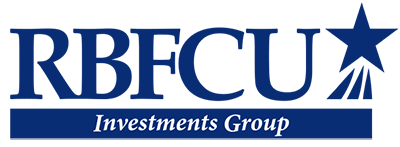Pensions vs. 401(k): Differences and Opportunities
Saving for retirement is an important financial endeavor most of us undertake. Understanding retirement accounts and how to use them, however, can prove challenging.

As you may know, pensions and 401(k) plans are two retirement tools available to help fund your retirement. While often mentioned in the same breath, there are key differences between them.
Let’s look at both retirement plans and how they work.
What is a pension?
A pension, also known as a defined benefit plan,1 is a retirement plan offered by an employer that provides a specific monthly benefit payable upon retirement.
Both the employee and the employer may contribute to the pension, and the retiree will receive income benefits for the rest of their life.
Pension benefits are calculated on a variety of formulas by an actuary, with each employer determining which is appropriate for its employees. Typically, the formulas include the number of years employed with the business and the employee's salary.
»Tip: If you are eligible for a pension benefit, be sure to dedicate time to learn how your benefits will be calculated. This approach will not only help you better anticipate how much money you may receive in retirement but also pave the way for you to explore whether other long-term investment strategies might be desirable as well.
At retirement, employees usually have options on how their pension benefit is paid. They may receive it as a lump sum or a monthly annuity,2 including:
- Single life payment: A monthly payment for life with no payments to any beneficiaries upon your death.
- Single life with terms: A monthly payment for a specified term. If you die before the end of the term, your beneficiary (typically only a spouse is eligible) receives payments for a specified term.
- Survivor payments: Monthly payments for life with beneficiaries receiving payments for the rest of their lives. Some plans determine a specific percentage of payments to survivors based upon a pensioner’s original benefits. (Again, only spouses are typically eligible for this type of payment.)
»Tip: Selecting the right payout method3 depends on a variety of factors, including other sources of retirement income, your health and your level of investment risk. Before determining your payout method, be sure you have a strong retirement plan4 in place, think through the potential impact of your choice5 and discuss with your tax advisor.
It’s worth noting that the number of traditional pension plans offered is declining. According to the Bureau of Labor Statistics, only a quarter of civilian workers6 were offered a traditional plan in 2022. While some pension plans are at risk if the company fails or closes, others may be protected by the Pension Benefit Guaranty Corporation,7 a federal agency. If you are enrolled in a pension plan, it can be wise to ask about what protections might be in place.
What is a 401(k)?
Although structured differently than pension plans, 401(k)8 retirement accounts are a common option for full-time employees.
Two basic types of 401(k) plans exist: Traditional and Roth.
An employee who participates in a Traditional 401(k) plan agrees to have a percentage of each paycheck paid into an investment account.9 Employees may then have the ability to choose from several investment options — including mutual funds or exchange-traded funds. They can also decide how much they wish to contribute to their individual plans, within current legal limits.
As with pension plans, Traditional 401(k) contributions are pulled from an employee's salary before taxes. These pre-tax contributions reduce current taxable income. Future withdrawals, however, will be subject to income taxes.
In addition to Traditional 401(k)s, employees may have the option to participate in a Roth 401(k) plan, making contributions with after-tax income. Contributions made to this type of account are made after taxes are paid on current income. Therefore, no additional taxes are paid upon withdrawal.
While a Traditional 401(k) is the most common retirement plan, there are a few other types of employer-sponsored retirement plans10 that offer the same structure and benefits as 401(k)s. These include:
- 403(b)11 plans offered by public schools and certain nonprofit organizations
- 457(b)12 plans available to certain state and local government employees, as well as some tax-exempt organizations
If both Traditional and Roth retirement 401(k), 403(b) or 457(b) options are available through your employer, you may consider having a mix of them in your retirement plan.13 You also might want to talk with a financial advisor to see if any additional retirement savings strategies or products are worth a closer look.
How can a 401(k) impact your retirement?
Many employers match their employees’ 401(k) contributions up to a pre-determined percentage. Those matching contributions14 can be a force multiplier for your retirement plan, helping increase your retirement funds.
To illustrate how that works, let’s imagine that Juanita Bloom is 28 years old, makes $50,000 annually and contributes up to 3% ($1,500) of her salary to her employer-sponsored Traditional 401(k). She makes the same salary each year (no raises or job loss) and works non-stop until the age of 65.
At that point, and assuming no other gains or fees, she will have saved $55,500.
Now, let’s look at what happens with an employer match using those same figures. If Juanita’s employer offers a 3% match on her Traditional 401(k) plan — meaning they match her contributions up to 3% of her salary annually — her yearly contribution is doubled to $3,000.
At age 65, she will have saved $111,000.*
That’s an over-simplification of how employer contributions can dramatically increase the effectiveness of your retirement savings — especially if your contributions match those of your employer.15
There are federal guidelines for 401(k)s, such as contribution limits,16 early withdrawal penalties, rules for borrowing funds from your account(s) and more. At the same time, there are rules about what you can (and cannot) do with your 401(k) when you change jobs, decide to move it to an Individual Retirement Account (IRA) or roll over your 401(k) while you’re still working.17 Due to these complexities, it can be helpful to build a relationship with a financial advisor who can help you navigate retirement planning matters over time.
»Tip: One advantage of a 401(k) many people overlook? The fact that plan holders may typically name anyone a beneficiary, potentially bypassing probate. Also, keep in mind that some states have special rules regarding non-spousal beneficiaries. Be sure to review with your tax advisor to discuss your options.
What are the major differences between a pension and a 401(k)?
Both pensions and 401(k)s are tied to benefits provided by employers and offer the easiest way for employees to participate (payroll deduction).
But there are a few major differences to keep in mind.
Pensions & 401(k) Plans: A Comparison
Pension Plans
- Contributions are determined and formulated by the employer.
- Investment of the funds is determined by the employer or the pension program.
- Pension benefit formulas are based on several factors, including salary and tenure.
- Benefits are guaranteed† by the employer and distributed for the life of the employee.
- Pension plans can be at risk if the company or business fails.
- Typically, only the pension plan member (employee) or their spouse may receive benefit payments.
401(k) Plans
- Both the employee and the employer decide contributions.
- 401(k)s — Traditional and Roth — have different tax implications.
- Investment of the funds is determined by the employee.
- Benefits depend on the results of the fund investments.
- Account balances belong to the employee — even if you change jobs.
- 401(k) funds are protected regardless of the financial health of the employing organization. (FDIC insures up to $250,000 of cash amounts for financial institution failure.)
- You may name anyone a beneficiary on your 401(k) plan — which may keep assets in the account from going through probate.
- Some states have special rules regarding non-spousal beneficiaries. Be sure to review with your tax advisor to discuss your options.
The takeaway
It's important to start planning for your retirement early — and to consider how employer-sponsored pension plans and/or 401(k) accounts might fit into the mix. At the same time, it's critical to understand the tax implications of these choices and whether the retirement income generated by them will be sufficient to meet your needs.
When you’re ready to review your retirement plan, RBFCU Investments Group and our team of financial advisors are here to help.

